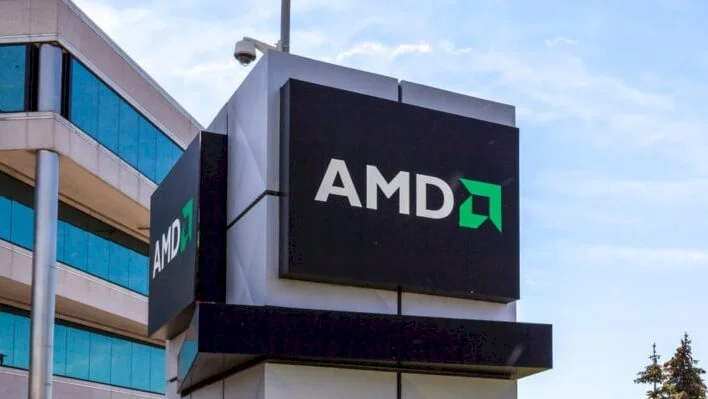
AMD (Advanced Micro Devices) has made significant strides in technology, innovation, and sustainability. From its groundbreaking advancements in microprocessors and graphics cards to its commitment to diversity and environmental responsibility, AMD has a rich history and an exciting future. Whether you’re a tech enthusiast, a budding engineer, or simply curious about the world of computing, this list will provide you with fascinating insights into AMD’s journey, achievements, and contributions to the tech landscape. Join us as we explore 25 intriguing facts that highlight why AMD continues to be a key player in shaping the future of technology!
Founded: AMD, or Advanced Micro Devices, was founded on May 1, 1969, by Jerry Sanders and a group of his colleagues from Fairchild Semiconductor. The company was established with the vision of creating innovative semiconductor products. Initially, AMD focused on producing memory chips, and it quickly gained a reputation for quality and performance in the semiconductor industry. The founding of AMD marked the beginning of a significant player in the microprocessor market, which would later challenge established competitors like Intel.
Headquarters: The headquarters of AMD is located in Santa Clara, California, USA, a region known as Silicon Valley, which is a global center for technology and innovation. This strategic location has allowed AMD to be at the forefront of advancements in semiconductor technology and to attract top talent in engineering and research. The Santa Clara headquarters serves as the hub for AMD’s operations, including research and development, marketing, and corporate management.
First Product: AMD’s first product was a 1-kilobit static RAM (SRAM) chip, which was released shortly after the company’s founding. This product laid the groundwork for AMD’s future in the semiconductor industry. The SRAM chip was essential for early computing systems, providing faster access to data compared to other types of memory. This initial foray into memory production helped AMD establish itself in the competitive landscape of semiconductor manufacturing.
Initial Public Offering: AMD went public in 1972, allowing it to raise capital for further expansion and development. The initial public offering (IPO) was a significant milestone for the company, as it provided the necessary funds to invest in research and development and to expand its product lines. Being publicly traded also increased AMD’s visibility in the market, enabling it to attract more customers and partners.
Acquisition of ATI: In 2006, AMD acquired ATI Technologies, a leading graphics processing unit (GPU) manufacturer, for approximately $5.4 billion. This acquisition was a strategic move to enhance AMD’s capabilities in the graphics market and to integrate graphics and computing technologies. The merger allowed AMD to develop products that combined high-performance CPUs and GPUs, leading to the creation of its APU (Accelerated Processing Unit) line, which has become popular in both consumer and gaming markets.
Athlon Processor: The AMD Athlon, released in 1999, was a groundbreaking product as it was the first x86 processor to surpass the 1 GHz clock speed. This achievement marked a significant milestone in processor technology, showcasing AMD’s engineering prowess and innovation. The Athlon processor gained popularity among enthusiasts and gamers for its performance and value, helping AMD to gain market share against its primary competitor, Intel, and establishing AMD as a serious contender in the CPU market.
64-bit Architecture: In 2003, AMD introduced the Athlon 64, the first x86 processor with 64-bit architecture. This innovation allowed for increased memory addressing capabilities, enabling systems to utilize more than 4 GB of RAM, which was a limitation of 32-bit processors. The introduction of 64-bit computing revolutionized the industry, providing significant performance improvements for applications requiring large amounts of memory, such as video editing and 3D rendering. This architecture became the foundation for future AMD and Intel processors.
Phenom Series: Launched in 2007, the Phenom series was AMD’s response to Intel’s Core processors. The Phenom CPUs featured a new architecture that improved performance and energy efficiency. The series included multi-core processors, which allowed for better multitasking and improved performance in multi-threaded applications. The Phenom series helped AMD regain competitiveness in the desktop CPU market and was well-received by consumers and reviewers alike.
APUs: AMD introduced the term “Accelerated Processing Unit” (APU) in 2011 to describe its processors that combine both CPU and GPU capabilities on a single chip. This integration allows for better performance in graphics-intensive applications and gaming while reducing power consumption. The first APU, the AMD Fusion, was designed for laptops and desktops, providing a cost-effective solution for users who needed both processing power and graphics performance without the need for a separate graphics card.
Zen Architecture: The Zen microarchitecture, launched in 2017, represented a significant leap forward in AMD’s processor technology. It introduced a new design that improved performance per watt and increased overall efficiency. The Zen architecture enabled AMD to compete effectively with Intel, offering high-performance processors for both consumer and enterprise markets. The success of Zen led to subsequent generations, including Zen 2 and Zen 3, which further enhanced performance and solidified AMD’s position in the CPU market.
Ryzen Launch: AMD launched the Ryzen series of processors in March 2017, marking a pivotal moment in the company’s history. The Ryzen processors were built on the Zen architecture and introduced a new level of performance and efficiency in the consumer CPU market. With up to 8 cores and 16 threads in the initial lineup, Ryzen offered significant multitasking capabilities, appealing to gamers, content creators, and professionals alike. The competitive pricing and performance of Ryzen processors helped AMD regain market share against Intel and re-establish its reputation as a leader in CPU technology.
Market Share: As of 2023, AMD holds approximately 25% of the desktop CPU market share. This figure reflects AMD’s successful efforts to innovate and produce high-performance processors that appeal to a wide range of consumers, from casual users to hardcore gamers. The company’s competitive pricing strategy and strong performance benchmarks have contributed to its growing popularity. AMD’s resurgence in the market has prompted Intel to respond with its own innovations and pricing adjustments, intensifying competition in the CPU space.
EPYC Processors: AMD’s EPYC server processors were first released in 2017 and are designed specifically for data centers and enterprise applications. The EPYC architecture features a high core count, with some models offering up to 64 cores and 128 threads, providing exceptional performance for multi-threaded workloads. EPYC processors are built on the Zen architecture and utilize a unique chiplet design, allowing for scalability and flexibility in server configurations. The introduction of EPYC has enabled AMD to make significant inroads into the server market, competing effectively against Intel’s Xeon processors.
7nm Process Technology: In 2019, AMD became one of the first companies to produce consumer chips using 7nm process technology, a significant advancement in semiconductor manufacturing. This technology allows for more transistors to be packed into a smaller area, leading to improved performance and energy efficiency. The first products to utilize this technology were the Ryzen 3000 series processors and the Radeon RX 5000 series graphics cards. The 7nm process has enabled AMD to offer products that deliver high performance while consuming less power, appealing to gamers and professionals seeking efficiency.
Graphics Cards: AMD’s Radeon brand is well-known for its graphics cards, which compete directly with NVIDIA’s offerings. The Radeon graphics cards have been popular among gamers for their performance and value, particularly in high-resolution gaming and VR applications. AMD has introduced various technologies, such as FreeSync, which helps eliminate screen tearing and provide smoother gameplay experiences. The Radeon line has evolved over the years, with the latest models featuring advanced features like ray tracing and enhanced AI capabilities, solidifying AMD’s position in the graphics market.
DirectX 12: AMD was one of the first companies to support DirectX 12, a graphics API that enhances gaming performance by allowing developers to better utilize multi-core CPUs and improve rendering efficiency. The support for DirectX 12 has enabled AMD graphics cards to deliver better performance in games that utilize this technology, providing a competitive edge over rival products. The collaboration with Microsoft to optimize drivers and hardware for DirectX 12 has helped AMD gain favor among gamers and developers alike.
Gaming Consoles: AMD supplies custom processors for major gaming consoles, including the PlayStation 5 and Xbox Series X, both released in 2020. These custom chips combine CPU and GPU capabilities, allowing for high-performance gaming experiences with enhanced graphics and faster load times. AMD’s technology in these consoles has contributed to the growing popularity of gaming on console platforms, as well as the demand for high-quality gaming experiences. The collaboration with Sony and Microsoft has solidified AMD’s position as a key player in the gaming industry.
Stock Symbol: AMD is traded on the NASDAQ stock exchange under the symbol AMD. The company’s stock has experienced significant growth over the years, particularly following the successful launch of its Ryzen and EPYC processors. Investors have shown increased interest in AMD due to its strong financial performance and market competitiveness, leading to a rise in stock value. The company’s stock performance is often seen as a reflection of its innovation and ability to capture market share in the semiconductor industry.
Acquisition of Xilinx: In 2020, AMD announced its acquisition of Xilinx, a leading provider of adaptive computing solutions, for $35 billion. The acquisition was completed in 2022 and aimed to enhance AMD’s product portfolio by integrating Xilinx’s FPGA (field-programmable gate array) technology with AMD’s CPUs and GPUs. This strategic move is expected to create new opportunities in data centers, artificial intelligence, and edge computing, allowing AMD to offer more comprehensive solutions for various markets and applications.
Environmental Commitment: AMD has made a significant commitment to environmental sustainability by pledging to reduce its greenhouse gas emissions and enhance energy efficiency across its operations. This initiative is part of AMD’s broader strategy to minimize its environmental footprint and contribute to a more sustainable future. The company has implemented various practices aimed at optimizing energy use in its manufacturing processes, which not only helps in reducing emissions but also leads to cost savings and improved operational efficiency. By focusing on these areas, AMD aims to set a benchmark in the tech industry for environmental responsibility.
Diversity and Inclusion: AMD places a strong emphasis on fostering a diverse and inclusive workplace. The company has launched several initiatives designed to promote diversity within its workforce, ensuring that employees from various backgrounds and perspectives are represented and valued. These initiatives include mentorship programs, employee resource groups, and partnerships with organizations that support underrepresented communities in technology. By prioritizing diversity and inclusion, AMD not only enhances its workplace culture but also drives innovation and creativity, which are essential in the fast-paced tech industry.
Employee Count: As of 2023, AMD employs over 15,000 individuals globally, reflecting its significant growth and expansion in the semiconductor industry. This diverse workforce is composed of skilled professionals across various fields, including engineering, research and development, marketing, and operations. The large employee count signifies AMD’s position as a major player in the technology sector, and the company is committed to providing a supportive and dynamic work environment that fosters professional growth and collaboration among its employees.
Revenue: In 2022, AMD reported a revenue of approximately $5.6 billion, showcasing its strong market presence and demand for its products and services. This revenue figure highlights the company’s successful strategies in delivering innovative computing solutions, particularly in the areas of high-performance computing, gaming, and data center markets. AMD’s financial performance has been bolstered by its commitment to research and development, enabling the company to stay competitive and meet the evolving needs of its customers in a rapidly changing technological landscape.
Sustainability Goals: AMD has set ambitious sustainability goals, aiming to achieve net-zero greenhouse gas emissions by 2025. This target reflects the company’s dedication to environmental stewardship and its recognition of the urgent need to address climate change. To reach this goal, AMD is investing in renewable energy sources, enhancing energy efficiency in its operations, and implementing sustainable practices throughout its supply chain. By striving for net-zero emissions, AMD not only contributes to global sustainability efforts but also positions itself as a leader in the tech industry’s transition towards more responsible and eco-friendly practices.
Innovative Technologies: AMD is at the forefront of research and development in advanced computing technologies, with a particular focus on artificial intelligence and machine learning. The company is dedicated to creating cutting-edge products that leverage these technologies to enhance performance and efficiency in various applications, from gaming to enterprise solutions. AMD’s innovative approach enables it to deliver high-performance processors and graphics solutions that meet the demands of modern computing, solidifying its reputation as a leader in the semiconductor industry and driving the future of technology forward.
FAQs about AMD
Q: What does AMD do?
A: AMD is a global semiconductor company that primarily develops computer processors (CPUs) and graphics processors (GPUs), as well as related technologies. They are a major competitor to Intel and NVIDIA in their respective markets. AMD’s products power a wide range of devices, including desktop and laptop computers, servers, gaming consoles (like the PlayStation and Xbox), and embedded systems. Beyond CPUs and GPUs, AMD also develops Field-Programmable Gate Arrays (FPGAs) through their acquisition of Xilinx, targeting a broader range of applications like networking, aerospace, and data centers.
Q: Who are AMD’s main competitors?
A: AMD’s primary competitors are:
- Intel: In the CPU market for desktop, laptop, and server processors. This is a long-standing rivalry, with both companies constantly vying for performance and market share.
- NVIDIA: In the GPU market, particularly for discrete graphics cards used in gaming, professional visualization, and data centers. AMD’s Radeon GPUs compete against NVIDIA’s GeForce and Quadro lines.
- ARM: While not a direct competitor in the traditional x86 CPU space for PCs, ARM’s designs dominate the mobile processor market (smartphones and tablets). ARM-based processors are increasingly challenging x86 in some server applications as well.
Q: What is the difference between AMD Ryzen and Intel Core processors?
A: Both Ryzen (AMD) and Core (Intel) are CPU brands, but they are based on different microarchitectures and designs. Key differences often include:
- Core Count and Threads: Ryzen processors often offer more cores and threads at similar price points compared to Intel, which can be advantageous for multi-threaded workloads like video editing and 3D rendering.
- Instructions Per Clock (IPC): IPC refers to how much work a processor can do per clock cycle. Historically, Intel had an IPC advantage, but recent Ryzen generations have closed the gap and, in some cases, surpassed Intel.
- Manufacturing Process: The manufacturing process (measured in nanometers, like 7nm or 5nm) impacts transistor density and power efficiency. Both AMD and Intel utilize advanced manufacturing processes, and the leading process node often shifts between the companies.
- Integrated Graphics: Both AMD and Intel CPUs include integrated graphics, but the performance varies. AMD’s integrated graphics (Radeon Graphics) are often more powerful than Intel’s integrated graphics (Intel UHD Graphics), especially in higher-end Ryzen processors.
- Platform and Chipset: AMD and Intel use different motherboards and chipsets. This means CPUs from one brand are not compatible with motherboards designed for the other.
Q: What are AMD APUs?
A: APU stands for Accelerated Processing Unit. AMD APUs combine a CPU and a relatively powerful GPU on the same chip. This is beneficial for budget-friendly systems, laptops, and small form-factor PCs where a separate graphics card isn’t required. Ryzen processors with integrated Radeon graphics are considered APUs.
Q: What are the benefits of an AMD CPU?
A: The benefits of an AMD CPU can vary depending on the specific processor, but some common advantages include:
- Price-to-Performance: AMD often offers competitive performance at lower price points compared to Intel, especially in multi-core performance.
- More Cores and Threads: AMD processors frequently have a higher core and thread count, which is beneficial for multitasking and demanding applications.
- Strong Integrated Graphics: AMD’s integrated graphics are generally more powerful than Intel’s, making them suitable for light gaming and everyday tasks without a dedicated graphics card.
- PCIe 4.0 Support (and now PCIe 5.0 on newer platforms): AMD was an early adopter of PCIe 4.0 and now also supports PCIe 5.0, offering faster data transfer speeds for compatible devices like NVMe SSDs and graphics cards.
Q: What are the benefits of an AMD GPU?
A: AMD GPUs (Radeon) offer several advantages:
- Competitive Performance: AMD’s Radeon GPUs offer strong performance in gaming and other graphics-intensive applications, competing with NVIDIA’s offerings.
- Price-to-Performance: AMD often provides a compelling price-to-performance ratio in the GPU market.
- FreeSync Technology: AMD’s FreeSync technology provides adaptive synchronization for compatible monitors, reducing screen tearing and stuttering for a smoother gaming experience.
- Open Source Initiatives: AMD is known for its open-source drivers and technologies, which can be beneficial for developers and users who prefer more control and flexibility.
Q: What is AMD’s Smart Access Memory (SAM)?
A: Smart Access Memory (SAM) is a technology that allows AMD Ryzen CPUs to more effectively access the memory of AMD Radeon GPUs. This can improve performance in certain games and applications when using compatible components (Ryzen CPU and Radeon GPU). It essentially allows the CPU to access a larger portion of the GPU’s VRAM, improving data transfer efficiency.
Q: Where can I buy AMD products?
A: AMD products are available from a wide range of retailers, both online and in brick-and-mortar stores. Some common places to buy AMD CPUs and GPUs include:
- Online Retailers: Amazon, Newegg, Best Buy, and other e-commerce platforms.
- Computer Hardware Stores: Local computer stores and electronics retailers.
- System Integrators: Companies that build and sell custom PCs often offer systems with AMD components.
Q: How do I update my AMD drivers?
A: You can download the latest drivers for your AMD CPU or GPU from the official AMD support website. AMD also provides a driver auto-detect tool that can identify your hardware and recommend the appropriate drivers. It’s generally recommended to keep your drivers up to date for optimal performance and stability.
Q: What is AMD’s roadmap?
A: AMD’s roadmap outlines their future product plans and technologies. Information about their roadmap can often be found in press releases, investor presentations, and technology publications. Keep in mind that roadmaps are subject to change, but they provide a general idea of AMD’s direction.








